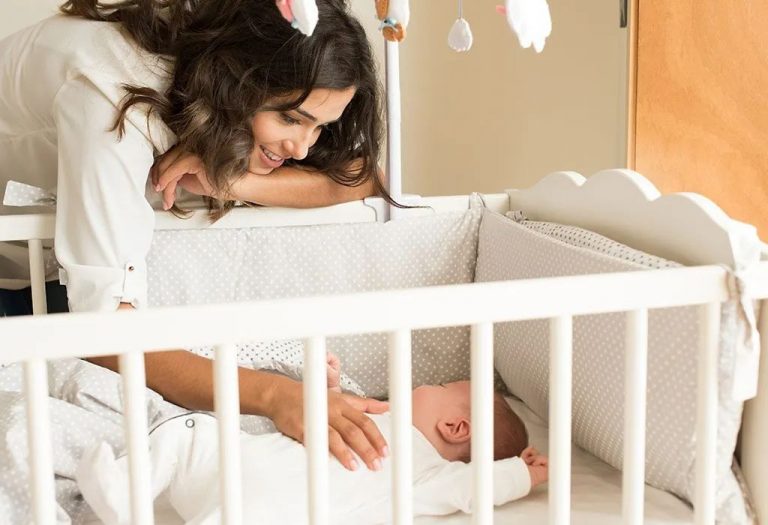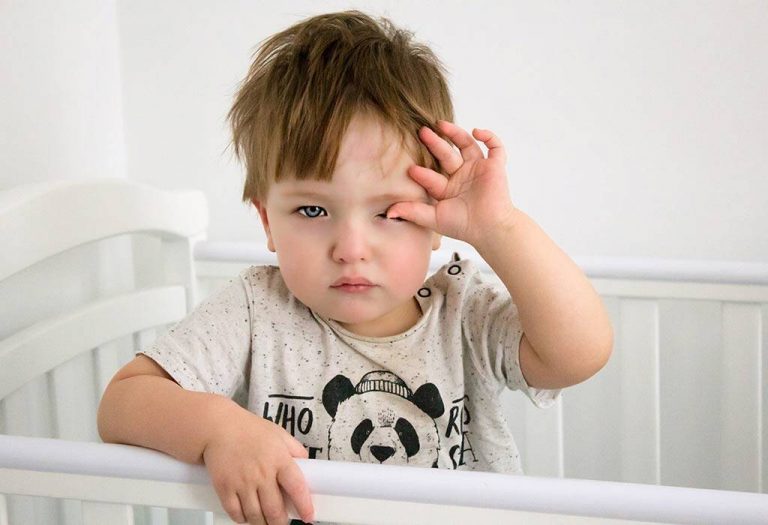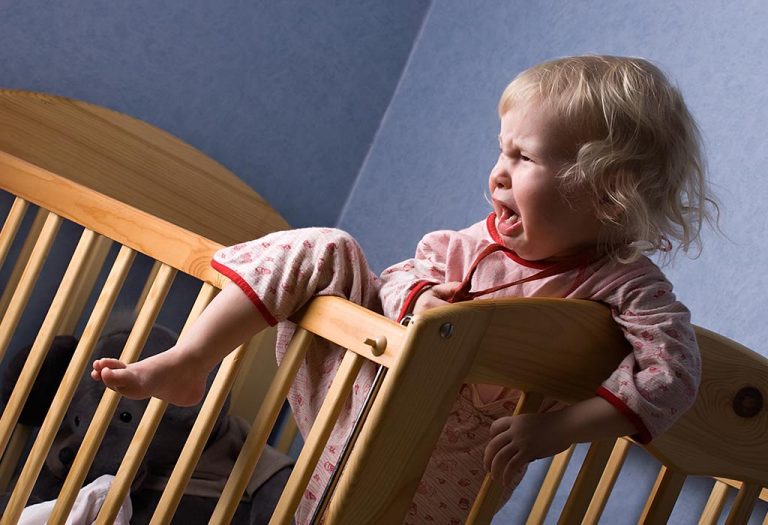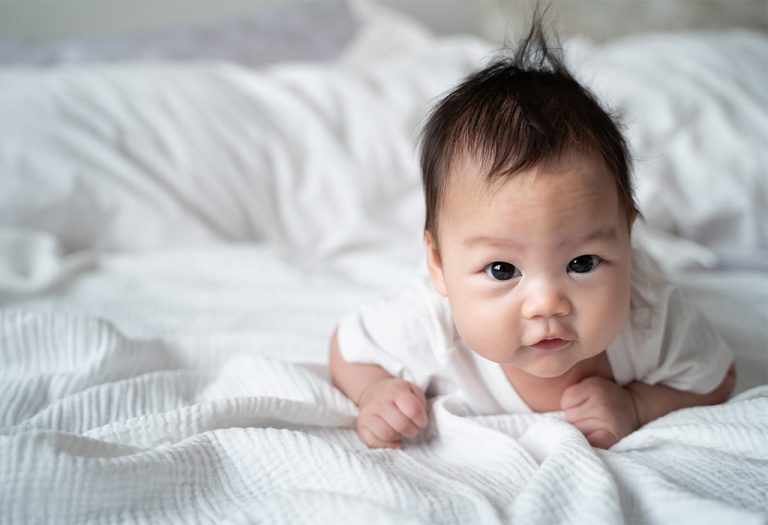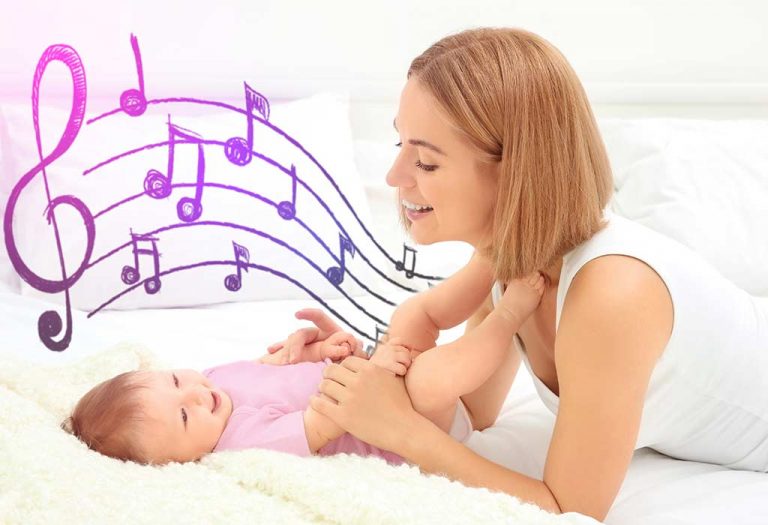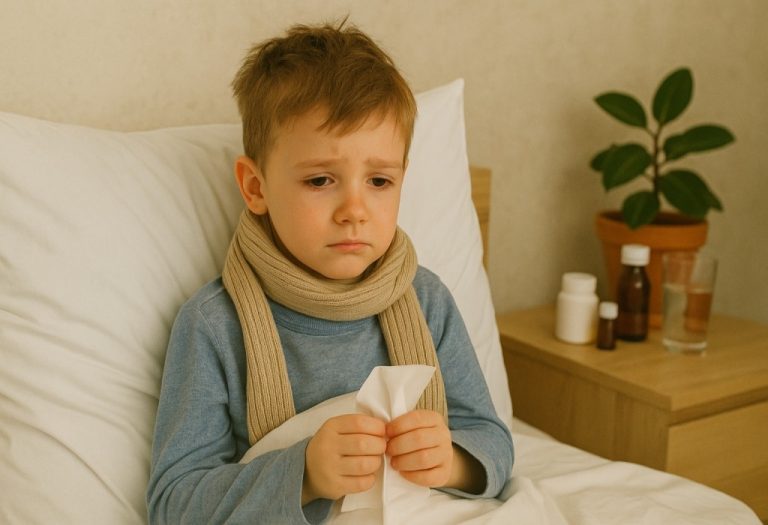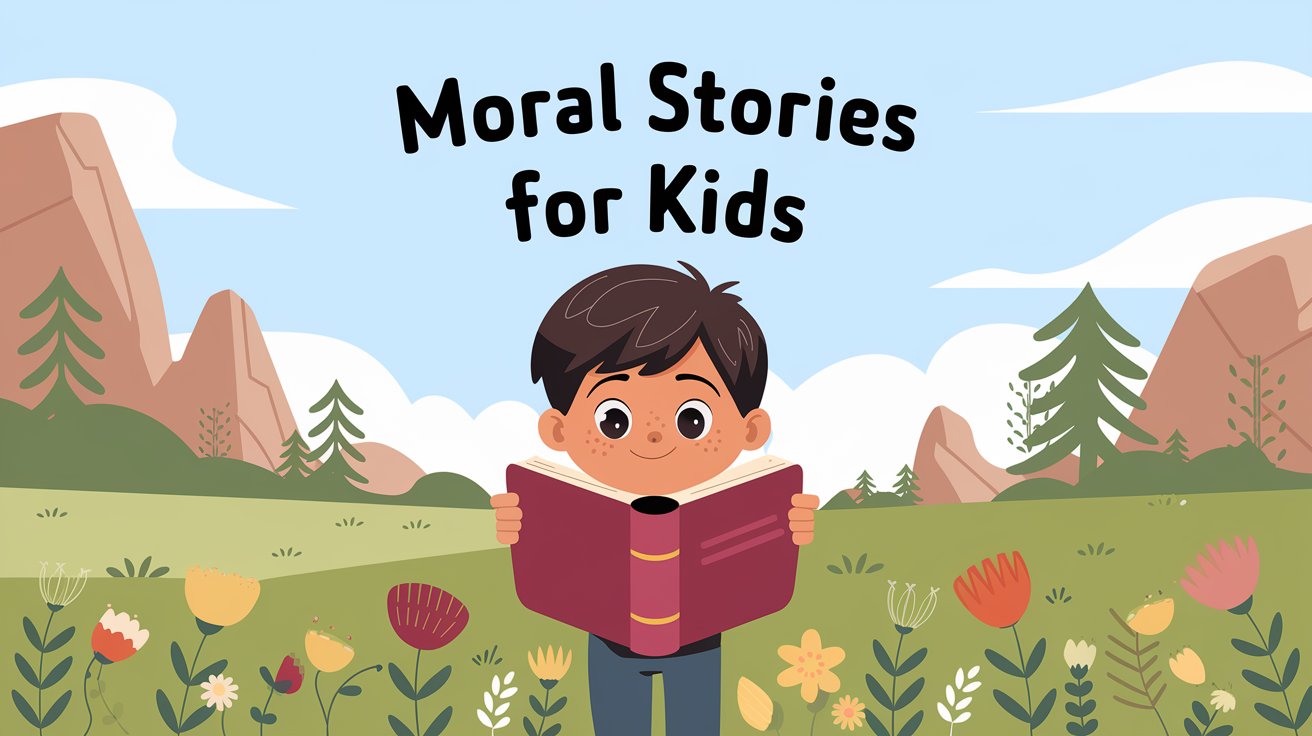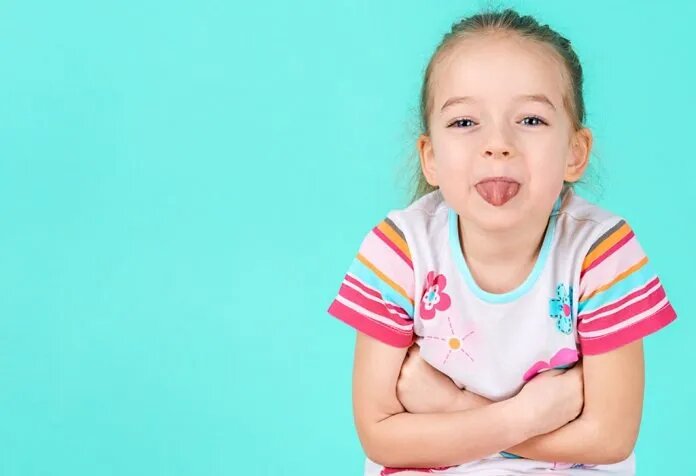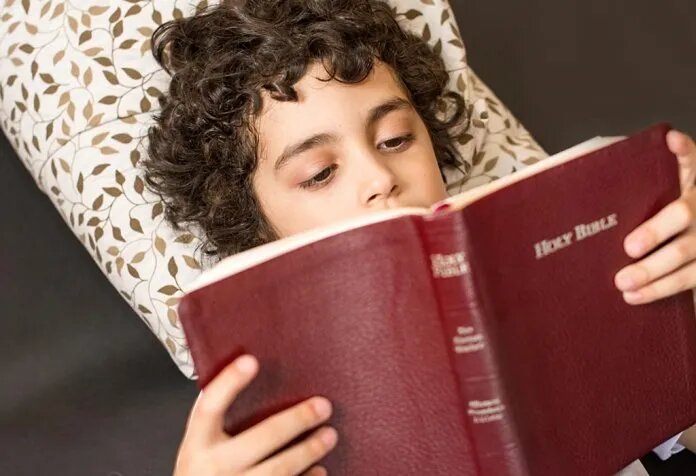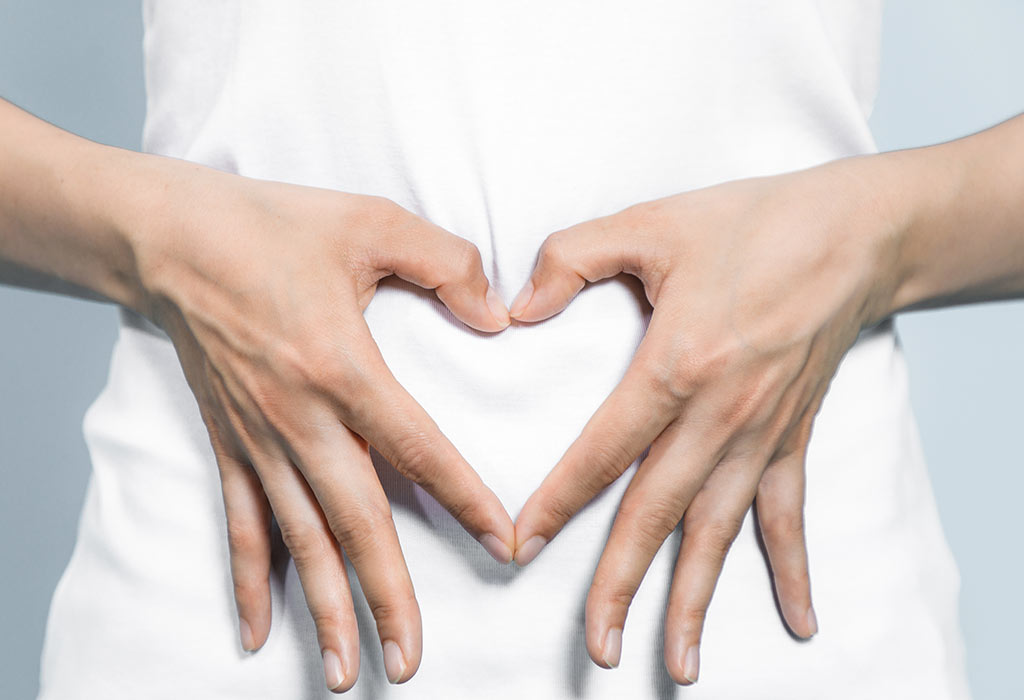Can Babies Sleep With a Pillow?
While lying down on your soft and cosy pillow, you may feel the need to give your baby that kind of comfort too, by giving him a pillow. There is no denying that pillows provide utmost comfort, aid in promoting good sleeping postures, and also help in sleeping better. However, using pillows for your little bundle of joy may be unwise. This is because using pillows may be dangerous for your little one. So, if you are wondering whether your baby requires a pillow or whether he can do without it, we recommend that you browse through the following article. Here, we shall discuss everything you need to know regarding when and how to use a pillow for your little one, and what are the things to be kept in mind when your baby uses a pillow.
Should a Newborn Baby Use Pillows?
Can infants sleep on pillows? Your baby’s comfort is of prime importance to you, and as parents, you may do everything possible to keep your baby cosy and comfortable. If you are first-time parents and wondering if your newborn can use a pillow, well, we recommend that you avoid it. It is seen that any kind of soft bedding material may lead to suffocation or choking hazards in babies.
Why Are Pillows Not Recommended for Babies?
Pillows are often discouraged for use with babies, primarily due to concerns regarding their safety and suitability for infants’ sleep environments. The following are the risks of using a pillow for babies:
1. Lack of Neck and Head Control
Babies lack proper neck and head control, especially in the early months after birth. This means that if a pillow or any other soft bedding material covers their nose or mouth, they may not have the ability to move their head away, potentially leading to suffocation and choking hazards.
2. Allergic Reactions
Young babies are highly sensitive to various allergens, including feathers and dust mites. Sleeping on pillows may expose them to these allergens, increasing the risk of allergic reactions. Therefore, pediatricians typically advise against using pillows to reduce the likelihood of triggering allergies in babies.
3. SIDS Risk
The use of pillows in cribs has been associated with an increased risk of Sudden Infant Death Syndrome (SIDS). Pillows can obstruct a baby’s airway, leading to breathing difficulties and potentially contributing to SIDS. To minimize this risk, it’s essential to create a safe sleep environment for infants by adhering to guidelines that recommend placing babies on their backs to sleep on a firm mattress without pillows or other soft bedding.
4. Risk of Entrapment or Strangulation
According to the American Academy of Pediatrics (AAP), having loose objects such as pillows in your baby’s sleeping area can heighten the risk of strangulation or entrapment. Alongside pillows, the AAP cautions against using crib bumpers, toys, stuffed animals, and blankets. If a baby becomes entangled or trapped beneath any of these items, they lack the strength to extricate themselves easily.
When Can Infants Use Pillows?
When it comes to the question of what age babies can start sleeping with a pillow, we recommend that any time after two years of age, you may start using a pillow for your little one. However, even after this age if you feel that your baby is comfortable sleeping without a pillow, you may skip giving him one.
At times, for babies under the age of 2, the paediatrician may recommend using a pillow because of certain health conditions such as reflux, ear infection, and chronic cold. There are reflux pillows designed to raise baby’s head. These pillows allow for easier breathing and digestion and might be useful if your baby experiences reflux since the discomfort of reflux can interfere with a baby’s sleep. If that is the case, you may place a pillow under your baby’s head, but you need to be watchful and alert at all times to not let the pillow cover the baby’s nose or mouth. You must take a few hours out every day for your baby and stay beside him when you give him a pillow. Ensure you keep the pillow far away from his reach and his crib when you are occupied with something.
How to Choose the Right Pillow for an Infant?
Pillows pose a risk of choking hazards, and they are also one of the top reasons for SIDS or Sudden Infant Death Syndrome, in babies. Therefore, pillows should be avoided for babies until they are advised by a doctor as a remedy to some health complication/ condition.
As discussed above, babies may be given pillows after two years of age, but the truth is that even after the age of two, there is no requirement. You may simply be using a pillow for your baby because everyone in the family may be using a pillow or you may want your baby’s bedding to look similar to yours, which is why you may even get a pillow for your baby.
If you do want to get your little one his own pillow when he is older than 2 years, there are certain things you should keep in mind while choosing the pillow. Read on to know more.
Tips to Select a Pillow for Your Baby
Here are some tips to help you select an appropriate pillow for your baby:
- We recommend that you choose a flat and a firm pillow for your baby; however, for an older child, you may choose a pillow similar to the one you’re using.
- If your baby is old enough to get a pillow but still sleeps in his crib, you could get a smaller and compact pillow that fits perfectly in the crib.
- We recommend using pure cotton covers for your baby’s pillows for they are soft and comfortable for your baby. Also, choose lighter colour covers, so that you can change them often or as soon as they get soiled.
- There is no doubt that you want everything that’s best for your baby, but when it comes to pillows, use simple and basic ones. Do not indulge and buy pillows with scented stuffing because babies are more prone to allergies.
- Do not use pillows with microbead fillings. This is because if the pillow rips or strips, the beads may fall out and your baby could swallow them too. This could lead to choking hazards and other complications.
- Refrain from using feather pillows for your baby. Though these pillows are very soft and comfortable, they may lead to allergic reactions in babies.
- Clean the pillow regularly. Pillows are often breeding grounds of infection. Residual dust, sweat, milk, oil, or dampness can contribute to the accumulation of germs. Wash the pillow according to the care instructions and ensure that it is completely dry before use.
FAQs
1. Are there specialized pillows designed for babies?
While some manufacturers may market pillows specifically for infants, pediatricians generally advise against their use due to safety concerns. These pillows may not mitigate the risks associated with suffocation, strangulation, or Sudden Infant Death Syndrome (SIDS).
2. Can breastfeeding pillows be used for infant sleep?
Breastfeeding pillows are designed to support a mother while nursing but are not intended to be used as sleep aids for babies. Using breastfeeding pillows in the crib poses similar risks as regular pillows, including suffocation and SIDS. It’s important to keep sleep environments free of soft bedding or accessories.
3. Do pillows aid in preventing flat head syndrome (plagiocephaly)?
There is no evidence to suggest that pillows prevent or alleviate flat head syndrome. In fact, using pillows in the crib can increase the risk of positional plagiocephaly by encouraging babies to maintain one position for extended periods, rather than freely moving their heads.
4. Are there alternatives to pillows that can promote safe and comfortable sleep for babies?
Yes, alternatives such as sleep sacks, swaddles, and properly fitted mattress protectors provide safe options for infant sleep without the risks associated with pillows. These items help maintain a comfortable sleeping environment while reducing the risk of suffocation or SIDS.
This was all about infants using pillows to sleep. Pillows are not recommended for babies until the age of two for health and safety reasons. Even older babies may not like to sleep on pillows. As stated above, babies don’t really need pillows unless there’s a medical condition that requires using pillows. When your baby is old enough and does not like using a pillow, there’s no need to force him to use it either. It is important to get a cue from your baby’s behaviour as to whether he’s comfortable with a pillow. If your child insists he gets a pillow, you may get in touch with a paediatrician to know the right age for him to use a pillow and the right kind of pillow you should choose him.
References/Resources:
1. How to Keep Your Sleeping Baby Safe: AAP Policy Explained; American Academy of Pediatrics; https://www.healthychildren.org/English/ages-stages/baby/sleep/Pages/A-Parents-Guide-to-Safe-Sleep.aspx
2. Sudden Infant Death Syndrome (SIDS); Boston Children’s Hospital; https://www.childrenshospital.org/conditions/sudden-infant-death-syndrome-sids#symptoms-and-causes
3. Helping Babies Sleep Safely; CDC; https://www.cdc.gov/reproductive-health/features/babies-sleep.html
4. Moon. R, Carlin. R, Hand. I; Sleep-Related Infant Deaths: Updated 2022 Recommendations for Reducing Infant Deaths in the Sleep Environment; American Academy of Pediatrics Publication; https://publications.aap.org/pediatrics/article/150/1/e2022057990/188304/Sleep-Related-Infant-Deaths-Updated-2022; June 2022
5. Suitable Sleeping Sites: Safe at Night & Naptime; American Academy of Pediatrics; https://www.healthychildren.org/English/ages-stages/baby/sleep/Pages/Suitable-Sleeping-Sites.aspx
6. Make Baby’s Room Safe: Parent Checklist; https://www.healthychildren.org/English/safety-prevention/at-home/Pages/Make-Babys-Room-Safe.aspx
7. Sudden Infant Death Syndrome (SIDS) and Sleep; SleepFoundation.org.; https://www.sleepfoundation.org/baby-sleep/sudden-infant-death-syndrome
Also Read:
Baby Sleeping on Side
Bedtime Schedule for Infants
Mustard Pillow (Rai Ka Takiya) for Babies
Sleeping Positions for Your Newborn Baby
Was This Article Helpful?
Parenting is a huge responsibility, for you as a caregiver, but also for us as a parenting content platform. We understand that and take our responsibility of creating credible content seriously. FirstCry Parenting articles are written and published only after extensive research using factually sound references to deliver quality content that is accurate, validated by experts, and completely reliable. To understand how we go about creating content that is credible, read our editorial policy here.





